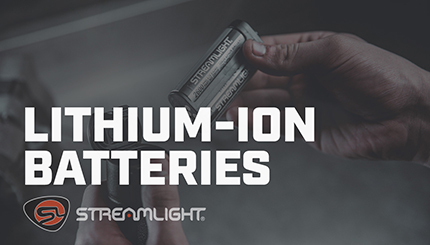Press Releases Detail
Please wait while results are retrieved...
Are All Lithium-Ion Batteries the Same?
By Brett Marquardt, Sales Manager

In the crazy world of batteries and the unlimited ways in which you can purchase lithium-ion cells, it’s important to have additional knowledge so you know exactly what you’re purchasing.
Let’s begin with some common features of lithium-ion cylindrical cells. These cells will have a positive and a negative terminal. They’re available in "button-top," which have a bump on the positive end for greater contact, and can be used in series (this would be one battery behind the other, like in a flashlight application). You can also purchase them in “flat-top” which has a flat or smooth surface at both ends of the battery. These cannot be used in series.
Different battery cells are commonly named by their dimensions. An 18650-size cell is named 18650 because the cell size is 18mm X 65mm and the 0 stands for a cylindrical cell. There are many universal sized cylindrical cells within the marketplace. For example, 10440 is 10mm X 44mm and 0: the 0, again, is for cylindrical. This cell is approximately the size of a standard AAA battery, whereas the 14500 is 14mm X 50mm and approximately the size of a standard AA battery, just to name a few.
Most rechargeable lithium-ion cells use a chemistry with a nominal voltage around 3.7 volts. Generally, for batteries with nominal voltage of 3.7 volts, fully charged, open circuit voltage is about 4.2 volts.
The cells are rated in mAh (milliampere hour). An easier way to think of this is cell capacity or available power to run a device. The larger or higher the mAh, the longer the run time. If comparing 2600mAh vs 3250mAh, the 3250mAh has 25% more output capacity. Higher capacity equals longer run times but also means longer recharge time with the same charging device. Generally, the higher mAh battery capacity, the more expensive the cell.
These cells can either be protected or not protected. Protected means that the cell has a circuit that will not allow the cell to overheat while charging or discharging, and/or while running a device. Unprotected means that the battery cell does not have this built-in protection circuit. Some battery chemistries or higher mAh outputs can be dangerous and the battery chemistry can become unstable while charging or discharging. In some instances, the battery could catch fire or even explode without a built-in protection circuit.
As you go out into the world to purchase lithium-ion batteries, it’s very important to keep several of these battery characteristics in mind. Just because it fits into the device does not mean it’s the correct battery or the best battery to use. You also need to remember that all batteries are not manufactured the same and some may not be compatible with each other. Each manufacturer has their own electronic and circuit designs inside the battery, meaning some batteries may not interact well with other batteries. You should never mix battery types or brands in the same device as you could run into issues with connectivity, performance, or worse.
Here are some key features to consider when selecting batteries:
- Button Top or Flat Top: Will the battery be used in a series or stand alone?
- Contacts: Some batteries will have gold contacts for greater connectivity.
- Cells: mAh (milliampere hour) or the cell's capacity
- Protected vs. Unprotected Battery Cell: This can be a large factor in the cost of the battery.
- Built-in Safety Circuit: This is designed to protect the cell from overheating while it’s charging or discharging and/or running a device. It also eliminates the battery from getting hot or overheating while it’s plugged in or being charged.
- Charging Status Indicators: With a USB charge port, the cell can have built-in charge status indicators — red for charging, and green when fully charged. This feature is great for indicating the status of the charging process.
- Battery Charging: A built in USB charge plug that accepts a standard USB charge cord for simple and convenient charging. Cells may also be charged using cradle or bank chargers. Some devices will also allow you to charge the battery while in the device.
There are many quality battery manufacturers in the world, but there are also some that are not as reliable. Generally speaking, you “get what you pay for” within the battery world and the initial battery cost should not be your primary decision-making factor. You should consider all features to determine the best battery to purchase for your usage and device.
At the end of the day, it’s clear that all lithium-ion batteries are not the same and the battery you choose will impact the performance of your device.
PHONE
1-800-523-74881-610-631-0600
FAX
1-800-220-70071-610-631-0712

